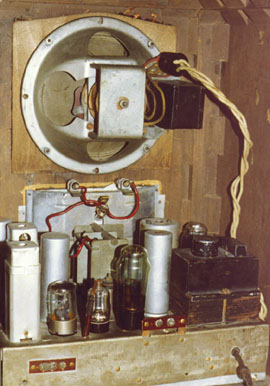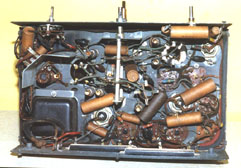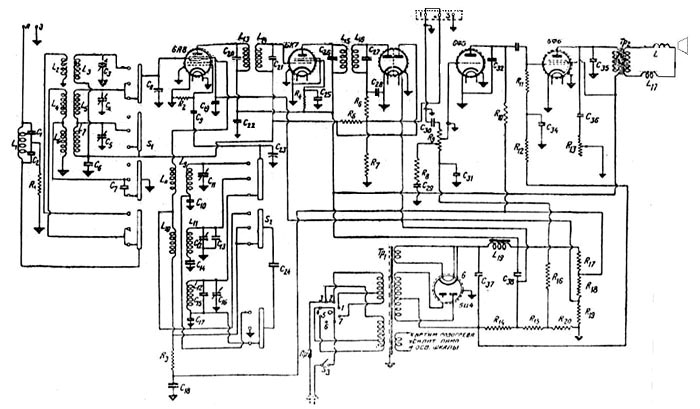If you ask people of old age in this country which of the pre-war receivers they still remember, the majority will answer it is the "6N-1". Its production was started in 1937 at Voronezh Radio Works. The base of its construction were some models produced then by the American RCA Victor corporation . The first lots of the receiver were supplied with metal tubes made by the US companies RCA, Ken-Rad, Tung-Sol. The 6N-1 (earlier known as 6NG-1 - "6-valve Tabletop Loudspeaking") became really the first mass superheterodyne radio in the USSR . It is documentally proved that such a receiver was in I.V.Stalin's study before the World War II. In the author's collection the set has the serial number 1 0232.
 |
|
The set is assembled in a varnished wooden case. The scale is marked in kilocycles showing the bands of broadcasting stations (16,19,25,31 and 49 m). The set has 4 control knobs on the front side. The upper is a double tunning handle (the small knob drives a ball reducer with the ratio of 50:1 for fine tuning; the big one is a cogged reducer 10:1 spinning a tuning capacitor). Down from the left is a tone control with a power switch, a band selector and a volume control. There are some sets with a 3 position tone switch combined with a power switch. The set has no tuning indicator. A rectangular scale of the aeroplane type has band indicators in the form of small lighted triangles in the center of the scale.
 |
|


